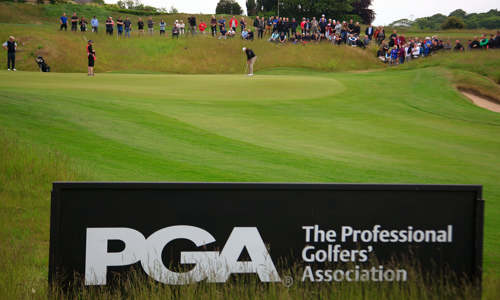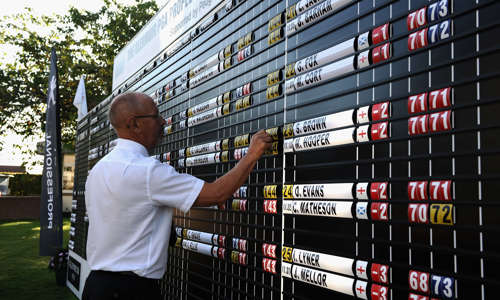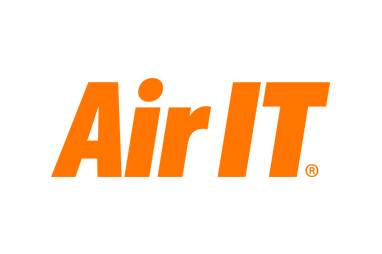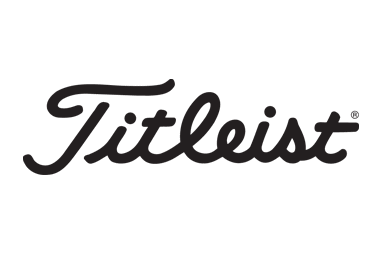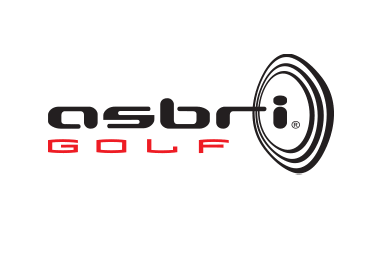Dr Sasho Mackenzie’s research suggests that rethinking the visual focus in putting can lead to better results on the greens for golfers of all skill levels.
Why do golfers look at the ball during their putting stroke? There are two likely reasons: either they’ve never questioned it, or they believe it helps them start the ball with the intended speed and direction. The role of vision in putting can be likened to skills such as free-throw shooting in basketball, where the goal is to project an object - a ball - towards a far target like a hoop or a hole. In free throw shooting, there is an advantage in visually focusing on the far target during the shot. Looking at the far target allows the athlete to better estimate the correct amount of effort to apply to the ball.
However, unlike basketball, where the ball is pushed directly from the hands, putting requires the ball to be struck with a club. If golfers could strike the ball (near target) with sufficient accuracy while focusing on the far target – such as the hole on a straight putt – they might gain the same benefits that this manner of visual focus provides in other target-orientated sports. Yet nearly every golfer focuses on the ball or a spot near it during the stroke, suggesting a prevailing belief that not watching the ball will compromise strike quality leading to suboptimal performance.
Sub-skills of the putting stroke
It is helpful to think of the putting stroke as being comprised of two sub-skills. The ability to deliver the putter head to the ball in a manner that starts the ball:
- In the intended direction
- With the intended speed
Looking at the ball during the stroke would theoretically enhance the first sub-skill; while looking at the far target may improve the golfer’s ability to estimate and apply the correct effort to launch the ball at the intended speed.
Four key variables at the time of impact with the ball can be identified as the primary determinants of a putt’s outcome. Three of these - face angle, clubhead path and impact spot – define the first sub-skill, as they determine the starting direction of the ball.
The fourth variable, clubhead speed, reflects the golfer’s ability to project the ball with the intended speed.
What the research reveals
In 2011, I published a study that measured these four variables on straight, flat putts from distances of 4 feet and 13 feet while 31 participants used both near- and far-focus visual techniques (MacKenzie, Foley, & Adamczyk, 2011).
Although no significant difference in make rate was observed between the methods, focusing on the far target during the stroke was shown to improve distance control by reducing variability in putter speed.
Notably, despite all participants having used the near-target focus (on the ball) throughout their golfing history, it did not provide a significant advantage in strike quality or directional accuracy compared to the far-focus strategy.
My findings agreed with previous research that showed no differences inthe visual techniques. It should be noted that straight, flat putts are not ideal for demonstrating the benefits of improved speed control. Moreover, putts are rarely flat; the average slope around the hole on the PGA Tour is approximately 2.5%. As a result, putts can miss high or low (left or right) due to errors in speed, line or a combination of both.
In 2017, I published a follow-up study comparing near-target and far-target visual focus strategies on putts with various break directions and lengths of 6, 10 and 14 feet (MacKenzie & MacInnis, 2017).
The study included 27 participants, each completing 144 putts - 48 putts per day over three days of testing. The far-focus strategy was associated with better distance control and a statistically higher make rate (40% vs. 37%). These findings suggest that focusing on the far target helps golfers better manage speed control, especially on breaking putts within 14 feet.
In more recent research, I’ve determined that impact spot variability does increase with far-focus putting, but this seems to be more than accounted for by improved control over putter head speed. This implies that speed control is perhaps more important than directional control.
For example, on a 3% uphill 6-footer on a 10 stimp green, I would aim for a relatively fast ball speed – perhaps 1.7 mph at the hole - to maximize the probability of capture. A ball speed of 1.7 mph strikes a balance between maximising the effective hole size and overcoming green or ball irregularities that can unpredictably influence the ball’s roll at slower speeds. This has been demonstrated empirically by numerous researchers.
For context, a ball travelling at 1.7 mph on a flat green with Stimp 10 would roll out approximately 18 inches past the hole if it were covered. It’s easier for golfers to think of intended roll out distance past the hole rather than ball speed at the hole.
However, putting strategy should aim to minimise total strokes, not simply maximise one-putt percentage. As a scratch golfer, if I intend for an entry speed of 1.7 mph, in the example above, I can reasonably expect my actual ball speed at the hole to vary between 1.2 and 2.2 mph, which equates to roll out distances between 6 and 24 inches. This ensures my attempt reaches the hole, but does not travel past tap-in range.
In contrast, on a 12-footer that’s 3% downhill at the hole, I would strive for almost zero ball speed at entry to reduce the risk of a three-putt. Your probability of three-putting is closely tied to intended ball speed at the hole. It is rare for an error in launch direction, on a first putt, to be the primary cause of a three-putt.
In comparison to the uphill putt, a ball travelling at 1.2 mph on a 3% downhill grade would roll out 24 inches, while at 2.2 mph, it would roll out 78 inches. For this downhill 12-footer, I shouldn’t optimise for sinking the initial putt. Once you’ve decided on the desired speed, you can then determine the optimal launch direction to pair with it.
Having an intended ball speed and direction allows us to evaluate how deviations from these values influence the outcome of a putt. By incorporating a golfer’s variances in ball launch speed and direction, we can assess their relative importance.
For instance, analysing thousands of real or simulated putts enables us to statistically determine how much typical errors in launch speed versus errors in launch direction contribute to missed putts.
My recent research indicates that errors in launch speed have a greater impact on putting performance than errors in launch direction. This finding may explain why golfers often experience improved putting performance when adopting a heads-up putting approach.
Overcoming challenges and gaining confidence
While heads-up putting offers many benefits, it’s natural to have some concerns about adopting a new technique. These challenges, however, are often minor and can be overcome with practice, leading to increased confidence and performance gains:
- Adjusting to a new technique
For golfers accustomed to traditional putting, transitioning to heads-up putting may initially feel uncomfortable. This discomfort stems from a reliance on visual cues - like watching the backswing - to gauge effort. For example, golfers with a flat, 10-foot putt often associate backswing length with the required speed. Heads-up putting removes this visual feedback, but the adjustment is temporary. With practice, golfers develop a stronger kinesthetic sense and gain confidence in their ability to focus on the far target.
- Reducing anxiety and enhancing focus
Heads-up putting promotes an external focus of attention, which research consistently links to improved performance. By concentrating on rolling the ball to the target rather than internal mechanics, golfers can reduce overthinking and improve their rhythm. This approach also minimises the common “looking up” flaw seen in traditional putting. Golfers already focused on the far target are less likely to disrupt their stroke by moving their head prematurely, and recent research shows that head motion is reduced with heads-up putting.
- How concerned should I be about mishits?
Concerns about mishits are often overstated. For a typical Anser-style putter, both distance and lateral errors are about 1% of putt length for every 0.4 inches the impact spot is off-centre. For instance, consider a 144-inch (12-foot) putt hit with enough speed to finish only 6 inches past the cup. A 10-handicapper might have one miss out of 100 attempts that’s further than 0.4 inches toward the toe or heel.
With a mishit this large, the ball would be safely inside the width of the cup when it reached the hole and would roll out four inches past the cup (if it were covered). These numbers demonstrate that typical impact variability does not significantly affect putting performance.
Leveraging data for improvement
Experimentation is essential to determining whether heads-up putting is the right fit for an individual’s game. A simple way to start is by setting up 15-minute testing sessions on a practice green, alternating sessions between heads-up and traditional putting methods, and comparing the results over the course of a couple of weeks.
For a more data-driven approach, The Stack Putting App offers a Statistical Comparison feature that provides detailed insights across multiple sessions. This feature allows golfers to objectively compare putting techniques by analysing metrics like make percentage, speed control, and directional accuracy. With the app’s ability to track and visualise performance data, golfers and coaches can make informed adjustments, building trust in the efficacy of heads-up putting.
Key learnings for coaches
Heads-up putting is more than just a novel idea; it is a scientifically supported approach that has the potential to transform one of the most critical aspects of golf. By fostering better speed control, reducing mechanical distractions and promoting an external focus, this technique offers benefits for golfers of all skill levels.
For PGA Professionals, heads-up putting presents an opportunity to challenge traditional norms and provide innovative solutions to their students. Coaches can use tools like the Stack Putting app to support this transition, offering objective feedback and fostering trust in the process. Encouraging players to experiment with both methods, backed by data, helps them make informed decisions and builds confidence in adopting new techniques.
This approach aligns with the broader coaching philosophy of adaptability and personalisation. By tailoring training to individual needs and preferences, professionals can better equip their students for long-term success. Incorporating heads-up putting into practice routines and lessons could open new pathways for performance improvement, particularly on the greens where strokes are often won or lost.
As the game of golf continues to evolve, so too must the methods used to teach and refine it. Heads-up putting exemplifies how research, technology and tradition can converge to create meaningful advancements. For those willing to embrace change, the rewards on the greens may be closer than ever.




